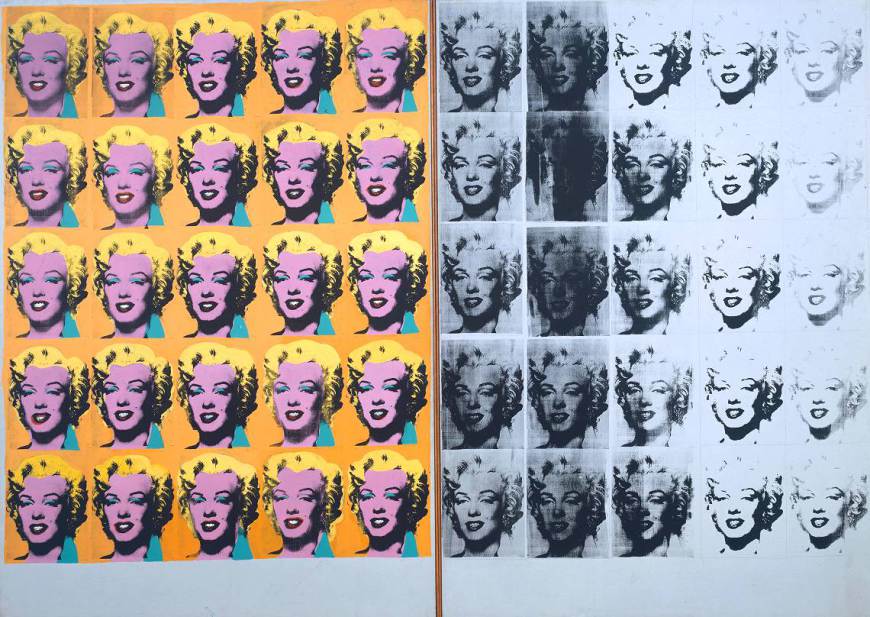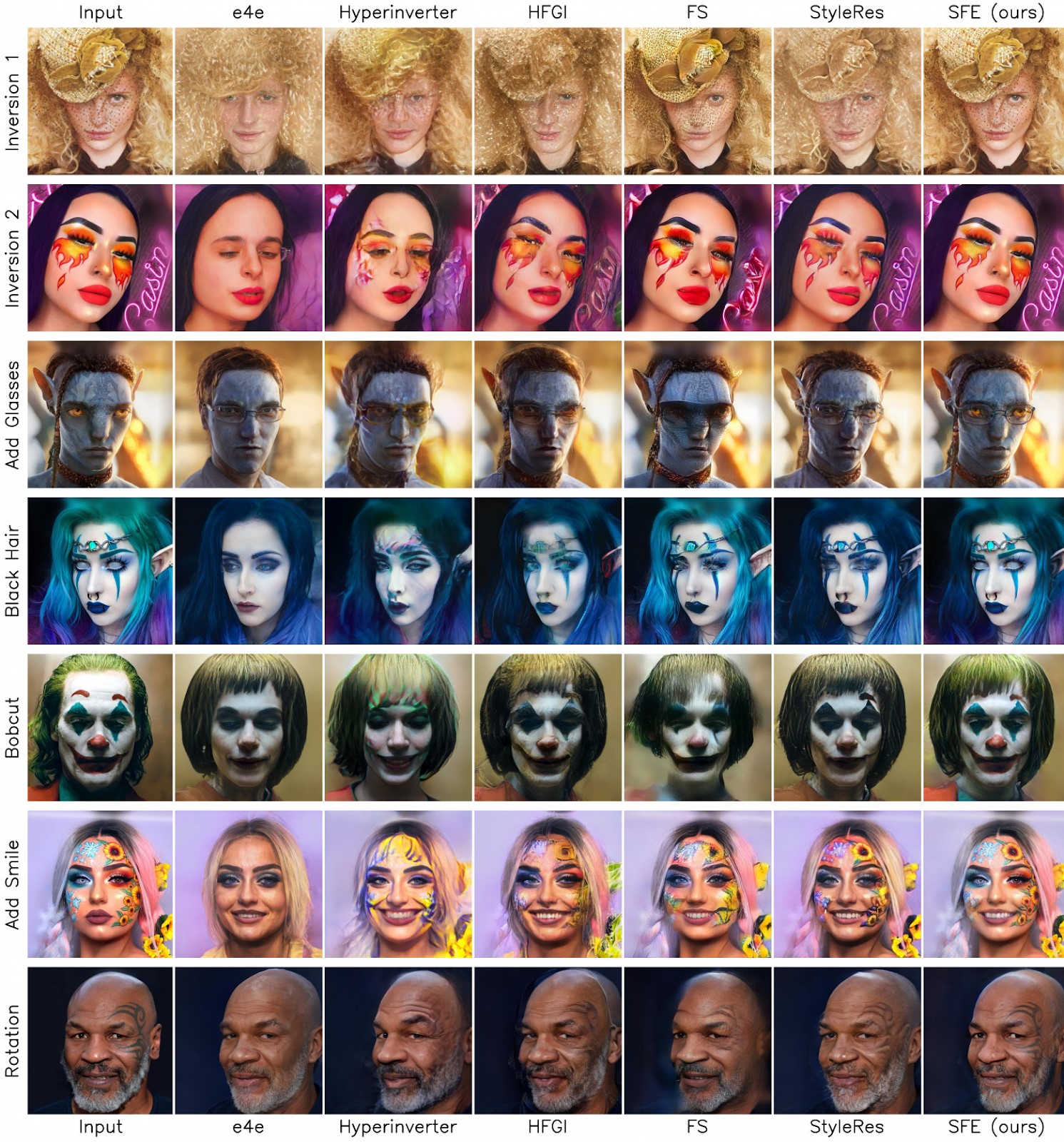Beauty in Details: HSE University and AIRI Scientists Develop a Method for High-Quality Image Editing

Researchers from the HSE AI Research Centre, AIRI, and the University of Bremen have developed a new image editing method based on deep learning—StyleFeatureEditor. This tool allows for precise reproduction of even the smallest details in an image while preserving them during the editing process. With its help, users can easily change hair colour or facial expressions without sacrificing image quality. The results of this three-party collaboration were published at the highly-cited computer vision conference CVPR 2024.
Artificial intelligence is already able to generate and edit images using generative adversarial networks (GANs). The architecture consists of two independent networks: a generator that creates images and a discriminator that distinguishes between real and generated samples. These networks compete with each other, and a new stage in their development is the StyleGAN model. This model can generate images and modify specific parts based on user requests, but it has not been able to work with real photos or images before.
Researchers from the HSE AI Research Centre, the Artificial Intelligence Research Institute (AIRI), and the University of Bremen have proposed a method to quickly and efficiently edit real images. This StyleFeatureEditor approach consists of two modules: the first inverts (reconstructs) the original image, and the second edits this reconstruction. The results of these two steps are passed to StyleGAN, which generates the edited image based on the internal representations. The developers addressed some challenges that had been encountered in previous research. With a small set of representations, the network could edit the image well, but it lost some details from the original. However, with a larger set, all the details were preserved, but the network had difficulty transforming them correctly according to the task.
To solve this, the researchers proposed a new solution: the first module finds both large and small representations, while the second learns how to edit the larger ones using the smaller ones as reference.
However, to train these modules to accurately edit the representations, the neural network requires both real images and their edited versions.
‘We needed examples, such as the same face with different expressions, hairstyles, and details. Unfortunately, such image pairs do not exist at the moment. So, we came up with a trick: using a method that works with small representations, we created a reconstruction of a real image and an example of editing this reconstruction. Although the examples were relatively simple and without details, the model clearly understood how to make the edits,’ explains Denis Bobkov, one of the authors of the article, a research intern at the Centre of Deep Learning and Bayesian Methods of the AI and Digital Science Institute (part of the HSE Faculty of Computer Science), and a Junior Research Fellow at AIRI’s Fusion Brain Lab.
However, training only on generated (simple) examples leads to a loss of detail when working with real (complex) images. To prevent this, the researchers added real images to the training dataset, and the neural network learnt to reconstruct them in detail.
Thus, by showing the model how to edit both simple and complex images, the scientists created conditions under which the network could edit complex images more effectively. In particular, the developed approach handles adding new elements of style while preserving the details of the original image better than other existing methods.

In the case of simple reconstruction (first row), StyleFeatureEditor accurately reproduced a hat, while most other methods almost completely lost it. The developed method showed the best results with additional accessories (third row): most methods could add glasses, but only the StyleFeatureEditor retained the original eye colour.
‘Thanks to this training technique on generated data, we have obtained a model with high editing quality and a fast processing speed due to the use of relatively lightweight neural networks. The StyleFeatureEditor framework requires only 0.07 seconds to edit a single image,’ says Aibek Alanov, Head of the Centre of Deep Learning and Bayesian Methods of the AI and Digital Science Institute (part of the HSE Faculty of Computer Science), and leader of the research group ‘Controlled Generative AI’ at AIRI's Fusion Brain Lab.
The research was funded by a grant from the Analytical Centre under the Government of the Russian Federation for AI research centres.
The research results will be presented at the Fall into ML 2024 conference on artificial intelligence and machine learning, which will take place at HSE University on October 25–26, 2024. Leading AI scientists will discuss the best papers published at top-tier (A*) flagship AI conferences in 2024. A demo of the developed method can be tried out on HuggingFace, and the source code is available on GitHub.
See also:
HSE Scientists Reveal How Disrupted Brain Connectivity Affects Cognitive and Social Behaviour in Children with Autism
An international team of scientists, including researchers from the HSE Centre for Language and Brain, has for the first time studied the connectivity between the brain's sensorimotor and cognitive control networks in children with autism. Using fMRI data, the researchers found that connections within the cognitive control network (responsible for attention and inhibitory control) are weakened, while connections between this network and the sensorimotor network (responsible for movement and sensory processing) are, by contrast, excessively strong. These features manifest as difficulties in social interaction and behavioural regulation in children. The study has been published in Brain Imaging and Behavior.
Similar Comprehension, Different Reading: How Native Language Affects Reading in English as a Second Language
Researchers from the MECO international project, including experts from the HSE Centre for Language and Brain, have developed a tool for analysing data on English text reading by native speakers of more than 19 languages. In a large-scale experiment involving over 1,200 people, researchers recorded participants’ eye movements as they silently read the same English texts and then assessed their level of comprehension. The results showed that even when comprehension levels were the same, the reading process—such as gaze fixations, rereading, and word skipping—varied depending on the reader's native language and their English proficiency. The study has been published in Studies in Second Language Acquisition.
Mortgage and Demography: HSE Scientists Reveal How Mortgage Debt Shapes Family Priorities
Having a mortgage increases the likelihood that a Russian family will plan to have a child within the next three years by 39 percentage points. This is the conclusion of a study by Prof. Elena Vakulenko and doctoral student Rufina Evgrafova from the HSE Faculty of Economic Sciences. The authors emphasise that this effect is most pronounced among women, people under 36, and those without children. The study findings have been published in Voprosy Ekonomiki.
Scientists Discover How Correlated Disorder Boosts Superconductivity
Superconductivity is a unique state of matter in which electric current flows without any energy loss. In materials with defects, it typically emerges at very low temperatures and develops in several stages. An international team of scientists, including physicists from HSE MIEM, has demonstrated that when defects within a material are arranged in a specific pattern rather than randomly, superconductivity can occur at a higher temperature and extend throughout the entire material. This discovery could help develop superconductors that operate without the need for extreme cooling. The study has been published in Physical Review B.
Scientists Develop New Method to Detect Motor Disorders Using 3D Objects
Researchers at HSE University have developed a new methodological approach to studying motor planning and execution. By using 3D-printed objects and an infrared tracking system, they demonstrated that the brain initiates the planning process even before movement begins. This approach may eventually aid in the assessment and treatment of patients with neurodegenerative diseases such as Parkinson’s. The paper has been published in Frontiers in Human Neuroscience.
Civic Identity Helps Russians Maintain Mental Health During Sanctions
Researchers at HSE University have found that identifying with one’s country can support psychological coping during difficult times, particularly when individuals reframe the situation or draw on spiritual and cultural values. Reframing in particular can help alleviate symptoms of depression. The study has been published in Journal of Community Psychology.
Scientists Clarify How the Brain Memorises and Recalls Information
An international team, including scientists from HSE University, has demonstrated for the first time that the anterior and posterior portions of the human hippocampus have distinct roles in associative memory. Using stereo-EEG recordings, the researchers found that the rostral (anterior) portion of the human hippocampus is activated during encoding and object recognition, while the caudal (posterior) portion is involved in associative recall, restoring connections between the object and its context. These findings contribute to our understanding of the structure of human memory and may inform clinical practice. A paper with the study findings has been published in Frontiers in Human Neuroscience.
Researchers Examine Student Care Culture in Small Russian Universities
Researchers from the HSE Institute of Education conducted a sociological study at four small, non-selective universities and revealed, based on 135 interviews, the dual nature of student care at such institutions: a combination of genuine support with continuous supervision, reminiscent of parental care. This study offers the first in-depth look at how formal and informal student care practices are intertwined in the post-Soviet educational context. The study has been published in the British Journal of Sociology of Education.
AI Can Predict Student Academic Performance Based on Social Media Subscriptions
A team of Russian researchers, including scientists from HSE University, used AI to analyse 4,500 students’ subscriptions to VK social media communities. The study found that algorithms can accurately identify both high-performing students and those struggling with their studies. The paper has been published in IEEE Access.
HSE Scientists: Social Cues in News Interfaces Build Online Trust
Researchers from the HSE Laboratory for Cognitive Psychology of Digital Interface Users have discovered how social cues in the design of news websites—such as reader comments, the number of reposts, or the author’s name—can help build user trust. An experiment with 137 volunteers showed that such interface elements make a website appear more trustworthy and persuasive to users, with the strongest cue being links to the media’s social networks. The study's findings have been published in Human-Computer Interaction.




